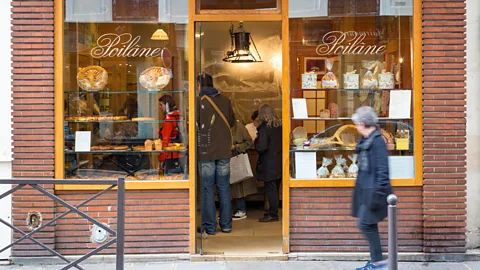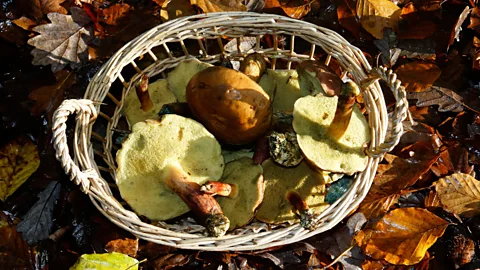According to Patrick Rambourg, French culinary historian and author of Histoire de la Cuisine et de la Gastronomie Françaises, if chicory never wholly disappeared in France, it’s in large part thanks to its flavour. “Chicory tastes good,” he explained. “It doesn’t necessarily make you think of periods of austerity.”
Other products did, however, such as swedes and Jerusalem artichokes, which WW2 historian Fabrice Grenard asserted “were more reserved for animals before the war.” The French were nevertheless forced to rely heavily on them once potato rationing began in November 1940, and after the war, these vegetables became almost “taboo”, according to Rambourg. “My mother never cooked a swede in her life,” added Morse.
Two generations later, however, Jerusalem artichokes, in particular, have surged to near-omnipresence in Paris, from the trendy small plates at Belleville wine bar Paloma to the classic chalkboard menu at bistro Le Bon Georges. Alongside parsnips, turnips and swedes, they’re often self-awarely called “les legumes oubliés“(“the forgotten vegetables”) and, according to Léo Giorgis, chef-owner of L’Almanach Montmartre, French chefs have been remembering them for about 15 years.
“Now you see Jerusalem artichokes everywhere, [as well as] swedes [and] golden turnips,” he said. As a chef dedicated to seasonal produce, Giorgis finds their return inspiring, especially in winter. “Without them, we’re kind of stuck with cabbages and butternut squash.”
 Alamy
AlamyAccording to Apollonia Poilâne, the third generation of her family to run the eponymous bakery Poilâne, founded in 1932, a similar shift took place with French bread. Before the war, she explained, white baguettes, which weren’t subject to the same imposed prices as sourdough, surged to popularity on a marketplace rife with competition. But in August 1940, bread was one of the first products to be rationed, and soon, white bread was supplanted by darker-crumbed iterations bulked out with bran, chestnut, potato or buckwheat. The sale of fresh bread was forbidden by law, which some say was implemented specifically to reduce bread’s palatability.
“I never knew white bread!” said Pla. When one went to eat at a friend’s home during wartime, she recalled, “You brought your bread – your bread ration. Your own piece of bread.”
Hunger for white bread surged post-war – so much so that while Poilâne’s founder, Pierre Poilâne, persisted in producing the sourdoughs he so loved, his refusal to bake more modern loaves saw him ejected from bakery syndicates, according to his granddaughter, Apollonia. These days, however, the trend has come full circle: Baguette consumption fell 25% from 2015 to 2025, but the popularity of so-called “special” breads made with whole or heirloom grains is on the rise. “It’s not bad that we’re getting back to breads that are a bit less white,” said Pla.
For Grenard, however, the most lasting impact the war left on French food culture was a no-waste mindset. “What remains after the war is more of a state of mind than culinary practices,” he said. Rambourg agreed: “You know the value of food when you don’t have any.”
 Alamy
AlamyThe French were forced to get creative with what they had. In France’s south-eastern Ardèche department, Clément Faugier rebranded its sweetened chestnut paste as Génovitine, a name whose medical consonance made it easier to market as a fortifier and even prescribe. In the coastal Camargue region, local samphire suddenly stood in for green beans. Morse’s great-grandfather foraged for wild mushrooms in the nearby Vosges mountains, and in cities, those with balconies planted their window boxes with carrots or leeks. Paris’ public Jardin des Tuileries was even transformed into collective kitchen gardens.
According to Rambourg, this subsistence mindset “would affect the entire generation that lived through the war, and our parents, because they were the children of our grandparents, who knew the war.”